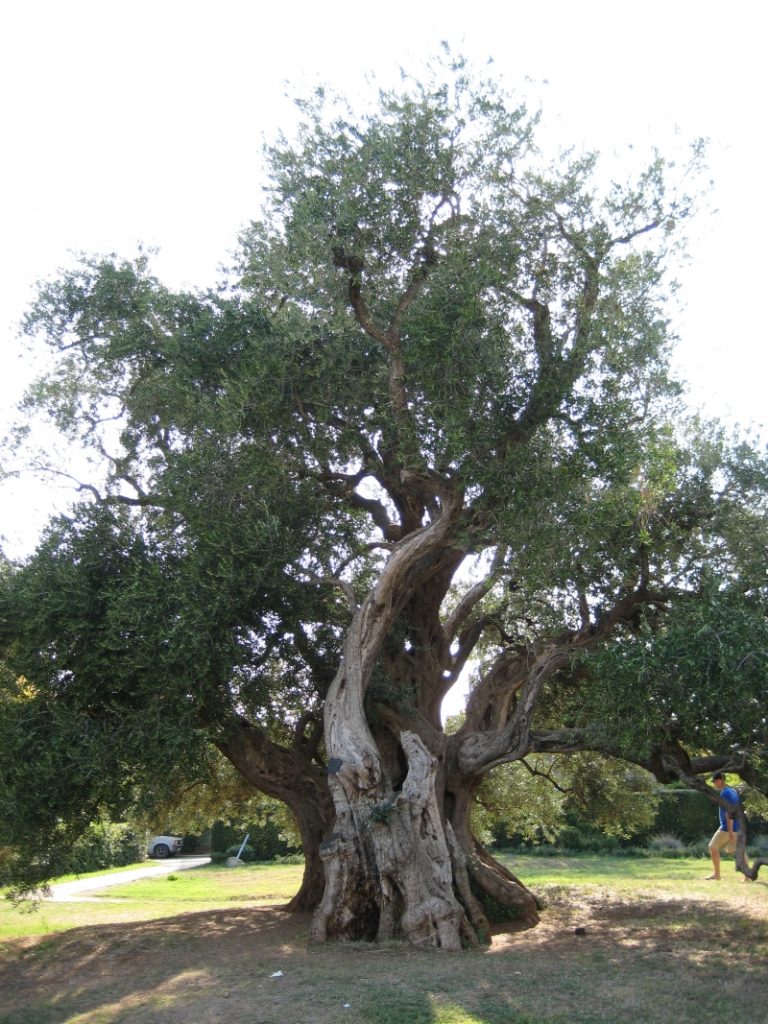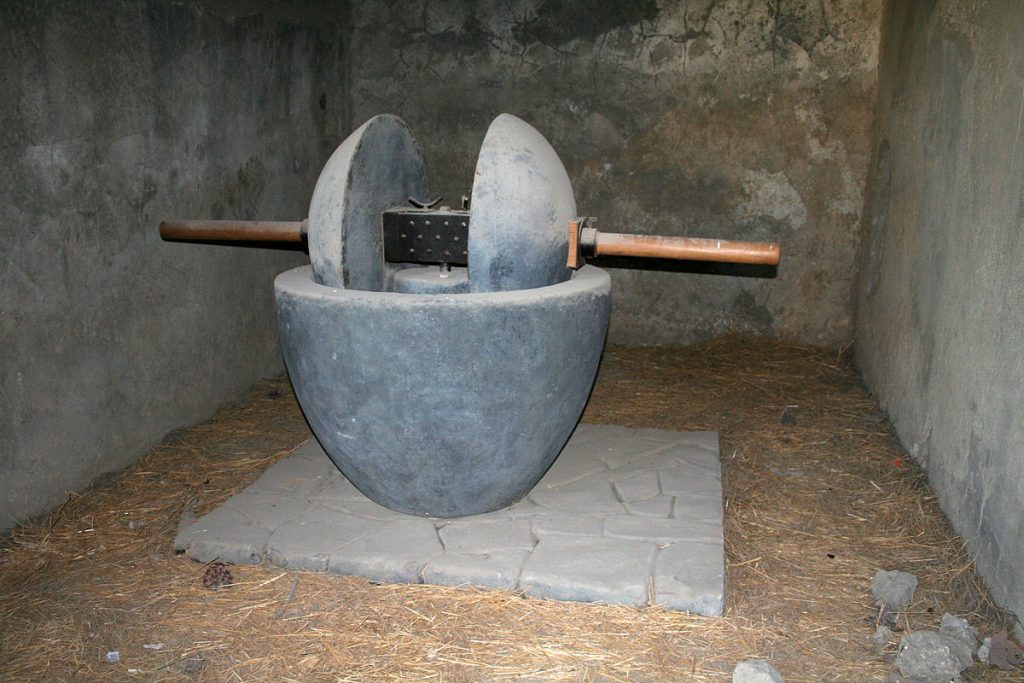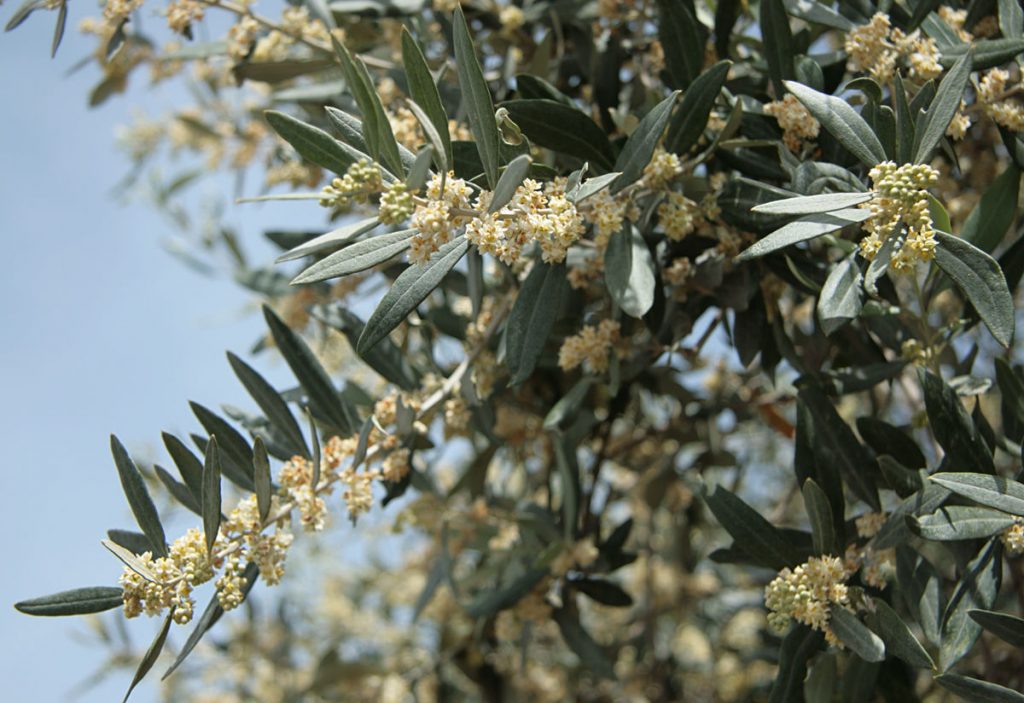
The olive was first cultivated from wild olive at the frontier between Turkey and Syria between 8,000 and 6,000 years ago. By 3000 BC it was cultivated by the Minoans and later spread to Africa and southern Europe by the Phoenicians. The ancient Roman naturalist, Pliny the Elder (d. 79 AD), tells us that the olive was introduced into Italy after the reign of Tarquinius Priscus (d. 578 BC) but that it was exported by the Romans to the provinces by the third consulship of Cn. Pompeius (52 BC). He goes on to describe the cultivation, harvesting, and processing of olives, and identifies 15 varieties of olive with special kudos for Licinian oil from the territory of Venafrum in Campania. Photo Credit Roberta F Wikipedia
Inscriptions, carbonized remains, and an olive crusher found in ancient Pompeii testify to the presence of olives in the ancient city. The primary product of olives was oil used for food, cleansing the skin, medicine, cosmetics, and fuel, but olives were also eaten in various ways such as whole after being soaked in brine, salted and dried in the sun, and mashed and mixed with vinegar and spices.


Photo Credit Anna Anichkova Wikimedia Commons
Description: The common olive is a small evergreen tree that can be successfully grown for fruit or as an ornamental in areas like California where summers are hot and winters are mild and wet. Olive trees are disease free, heat and drought tolerant, grow slowly but can live for hundreds, perhaps thousands of years, and become broad and gnarled with maturity. They are a member of the Oleaceae family that also includes lilacs, jasmine, and forythia. The narrow, leathery leaves are up to three inches long and have grey-green tops and silvery white undersides. Clusters of tiny fragrant yellowish flowers are produced in summer and are followed by edible, attractive green fruits that ripen to black in the fall if conditions are favorable. Olives need hot summers but a 2-3 month chill period (below 50 degrees) in the winter for optimum production of flowers and fruit. There are many cultivars available that vary in growth characteristics, climate requirements, and appearance of the plant, as well as the quality of the olive oil that can be produced from the fruit.
Size: 20-30’ H x 15-25’ W
Light: Full sun
Soil: Fertile, moist , well-drained; tolerates lean soil; drought once established
USDA Hardiness Zones 8-10